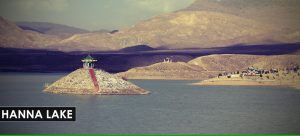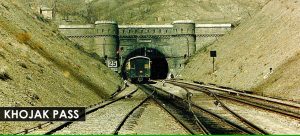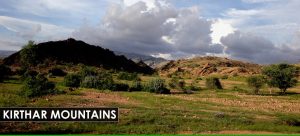Balochistan is the province of Pakistan, forming the southwestern region of the country. It is Pakistan’s largest province by space, constituting a quarter-mile of Pakistan’s total landmass. Its city and largest town in Quetta.
It has borders with Punjab and the Federally Administered tribal Areas to the northeast, Sindh to the east and southeast, the Arabian Sea to the south, the Islamic Republic of Iran to the west and Afghanistan to the north and northwest.
The main ethnic groups within the province are the Baloch individuals and the Pashtuns, The name Balochistan means “the land of the Baloch” in several regional languages. Mostly underdeveloped, its provincial economy is dominated by natural resources, particularly its natural gas fields, estimated to have a decent capacity to supply Pakistan’s demands over the medium to long term. Apart from Quetta, a further area of major economic importance is Gwadar Port on the Arabian Sea.
The province’s renewable and human resource potential has not been consistently measured or exploited due to pressures from within and without Pakistan. Local inhabitants have chosen to live in towns and have relied on sustainable water sources for thousands of years.
Weather in Balochistan:
The climate of the higher highlands is characterized by terribly cold winters and hot summers. Within the lower highlands, winters vary from very cold in northern districts Ziarat, Quetta, Kalat, Muslim Bagh, and Khanozai to milder conditions closer to the Makran coast. Winters are mild on the plains, with the temperature never falling below freezing point. Summers are hot and dry, particularly within the arid zones of Chagai and Kharan districts. The desert climate is characterized by hot and extremely arid conditions. Often, strong windstorms make these areas inhospitable.
Development projects:
Several major development projects, together with the development of a new deep seaport at the strategically important town of Gwadar, are ongoing in Balochistan. The port is projected to be the hub of an energy and trade passageway to and from China and the Central Asian republics. The Mirani Dam on the Dasht River, fifty kilometers west of Turbat within the Makran Division, is being built to supply water to expand agricultural land use by 35,000 km2 where it would otherwise be unsustainable. One of the world’s largest ship breaking yards is found on the coast
Natural resources in Balochistan:
It is one of the richest resource states in South Asia but its inhabitants live in abject poverty. Balochistan has the lowest literacy rate and highest infant mortality rate in all over Pakistan. Despite being a naturally rich province, people of Balochistan suffer due to apathy of the Provincial and Federal government.
Over US$1 trillion worth of natural resources has been discovered in Balochistan including, Gold, Copper, Black pearl, Oil, Valuable Stones, Coal, Chromite and Natural Gas. Additionally, Balochistan has an Oceanic coastline that stretches along with one of the world’s most important shipping routes i.e. the Straits of Hormuz. its resources could potentially support the population of Balochistan and bring prosperity to the region. Balochistan does not need any foreign aid for its development.
The province of Balochistan has a trillions worth of Gold and Natural Gas but its people are deprived of employment, quality education and clean drinking water. Humans and Animals use the same water and there are no proper Healthcare facilities.
Places of interest in Balochistan:
Astola Island:

Astola Island also called Astole is situated in the Balochistan Province of Pakistan. It is also known as ‘Jezira Haft Talar’ or ‘Island of the seven Hills. It is an uninhabited island in the Arabian Sea. It is a part of the Pasni sub-district of the Gwadar District.
The island is 6.7 kilometers in length and a maximum width of 2.3 kilometers. The highest point of the island is 246 feet above sea level. Astola Island maintains endemic life because of its isolated location. It is a very important area for endemic life. It also supports a large number of breeding water birds and many other creatures. There is no source of freshwater on the island. That is the reason that there are no trees on the island. The vegetation depends on the occasional rainfall and soil moisture for survival.
In Astola Island, there is a small mosque associated with Khawaja Khizr and there are ruins of an ancient Hindi temple of Hindu goddess ‘Kali’. The island was called Satadip among Hindus.
Gwadar:

Gwadar city, renowned for the warm water deep seaport of Gwadar, is found on the south-western Arabian Seashore in the coastal area of Balochistan, Pakistan. It is located about 460 kilometers from the city of Karachi and seventy-five kilometers from the Iranian border. It is the capital of the Gwadar District. It additionally works as winter capital for the province of Balochistan.For many years, Gwadar remained under the rule of many colonial and regional states, one after another. It came under the administrative management of the government of the Islamic Republic of Pakistan in 1958.
The port of Gwadar was finished in the year 2007. It is located at the mouth of the Gulf of Oman and at the apex of the Arabian Sea, which gives it great strategic importance. The depth of the port is forty-seven feet. It is used to handle massive consignment ships to the Islamic Republic of Pakistan. The harbor is growing as the main center of trade and a way for Oil imports of China.
climate:
Gwadar contains a hot desert climate, defined by very little precipitation and high variation between summer and winter temperatures. The oceanic influence keeps the temperature lower in summer and better in winter as compared to the inland.
Its location and history have given it a unique blend of cultures. The Arabic influence upon Gwadar is powerful as a consequence of the Omani era and its proximity to the Arabian Peninsula.
Hanna Lake:

Hanna lake is one of the main attractions in Quetta city. It’s the ideal place for holidaymakers. It is situated near Hanna Udak. It’s 14 km away from Quetta. It was developed by the British Empire in 1894 to save the rainwater coming from the cheltan hills around.
It is a reservoir for the water but now due to lack of attention by Hanna lake development authority it is damaged due to heavy flood in 1976 and it is not restored yet, the lake dries up to 3 feet which is a dangerous situation for the lives of several thousands of fishes in the lake. As a result of not repairing the lake remained dried from 1999 to 2005.
Golden Fish is a special fish that lives in Hanna Lake and presents itself on the surface to entertain the tourists. It is a beautiful natural place. Its custodians made a lakeside restaurant that serves you at their best. You can go there and enjoy a cup of tea with your loved one in peace and sights of the beautiful lake. Lake has a park too. These amusement parks have many instruments of entertainment for you and your children. It includes the dinosaur and horse rides which almost takes one’s heart. You will amaze to know that Hanna Lake is one of the best ones in all picnic spots. It has a boating point too.
Hingol National Park:

Hingol National Park is spread over an area of about 1,650 sq km² along with the Makran coast and is the largest of the National Park of Pakistan. It is located approximately 190 km from Karachi. The area was first declared reserved in 1988.
The park area covers parts of the three districts of Lasbela, Gwadar, and Awaran containing a variety of topographical features and vegetation, varying from the arid sub-tropical forest in the north to arid mountains in the west. Large tracts of the Park are covered with drift sand and can be classified as coastal semi-desert. The National Park includes the estuary of the Hingol River which supports a significant diversity of bird and fish species.
It is known to support threatened invertebrates in addition to a variety of bird species. The Marsh Crocodile, Olive Ridley and Green Marine Turtles, endemic and threatened species of fish (such as the Mahasheer) and schools of Plumbeous Dolphins are known to be found in areas around the Hingol River. The park is an excellent habitat for wild animals including ibexes, Urials, and Chinkara, along with several residents and migratory birds.
Mammals in the park include Sindh Leopard, Indian Fox, Jungle Cat, Jackals, Sind Wild Goat, Chinkara Gazelle, Honey Badger, Indian Pangolin and many more. As for the birds, Houbara Bustard, Dalmatian, and Spot-billed Pelican, Lagger Falcon, Red-headed Merlin, Kestrel, Grey Partridge, See-See Partridge, Eagle-owl, Sindh pied woodpecker, Bonelli’s, Imperial Tawny and Golden Eagle are also found here. There are many varieties of sand grouse like Stone Curlew, Indian, Coroneted, Painted and Close-Barred Sand Grouse.
khojak pass:

In the past few months, we have traveled through Bolan Pass, Khyber Pass, and Chappar Rift. Today we’ll visit yet another marvel of civil and mechanical engineering present on Pakistan’s Railway Network. It is called the Khojak tunnel. Built 115 years ago (September 1891), it was then the fourth-longest tunnel in the world and to date, it is the longest tunnel in Pakistan.
Built-in the historic Khojak pass, the tunnel is located some 113km from Quetta on the Quetta-Chaman Railway line. Khojak pass itself is located across the Khwaja-Amran offshoot of the Toba-Kakar Mountains.
The tunnel is located between the towns of Senzala and Shelabagh. The pass reaches its crest at Shelabagh railway station at an altitude of 5394 feet above sea level.
The construction of the Sibi-Quetta-Chaman railway line was planned in 1857-58 with the ultimate aim of taking it to Kandahar and forestalling the threat of the Russian offensive in India. At that time there was a recurrent fear of Russian invasion into India through the Bolan Pass. Some graves of Russian noblemen from the 1850s are found in the Sibi-Khost area of Baluchistan which suggests that Russians were already active in this area.
The project was renamed Chaman Extension Railway. The railway line would now go up to Chaman only. Chaman is the last Pakistani station on the Pak-Afghan border. To reach Chaman, the railway line had to pass through the Khojak pass which was an unsurmountable obstacle at that time. Hence it was decided to tunnel this pass, and the project was named Khojak Tunnel.
kirthar mountain:

Kirthar National Park is home to a variety of wildlife and the extensive mountainous terrain. It is one of the largest national parks of Pakistan where many animals ranging from mammals, birds and reptile species take refuge in the perfect natural environment. It is famous for its uniqueness and richness in natural beauty and cultural heritage. This park has its little world with these species welcoming you in their home.
Mola Chotok:

Mola Chotok is one of the most beautiful natural spring of Pakistan or I must say of the world. It’s almost 480 KM away from Karachi, It is not easy to get there. The drive from Karachi to Khuzdar takes five hours. Going a little further and you come across an off-road track which is so rocky that no car can be driven on it. The only option is to switch to a 4×4.
After a roller coaster ride, you have to park your jeep and start trekking to reach the main picnic point, but after a first look of the spring, you will forget all of your tiredness. It’s like an endless route full of natural pools and waterfalls. The water is crystal clear that you can see fishes swimming around.
The water is cold even if the temperature is high, that’s because of the shade of the mountains I must say. You can spend hours and hours of joyful time. At night you can witness the Milky Way from naked eyes.
Until the last few years, this area was hidden from travelers but after the influence of traveler groups on Facebook this place becomes very crowded which is effecting the beauty of this place, people throw trash and destroying the uniqueness of the natural spring.


